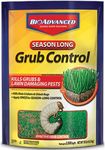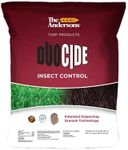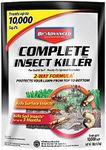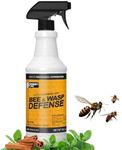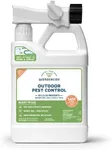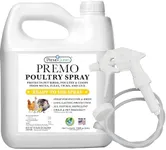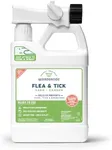Buying Guide for the Best Lawn Insecticides
Choosing the right lawn insecticide is crucial for maintaining a healthy and pest-free lawn. The right product will help you manage and eliminate pests without causing harm to your grass, plants, or the environment. To make an informed decision, you need to understand the key specifications and how they align with your specific needs. Here are the essential factors to consider when selecting a lawn insecticide.Active IngredientsThe active ingredients in an insecticide are the chemicals responsible for killing or repelling pests. This spec is important because different ingredients target different types of insects and have varying levels of toxicity. Common active ingredients include bifenthrin, carbaryl, and permethrin. If you have a specific pest problem, such as grubs or ants, look for an insecticide with an ingredient known to be effective against that pest. For general pest control, a broad-spectrum insecticide may be more suitable.
Target PestsThis specification indicates which pests the insecticide is designed to control. It's important because using the wrong product may not effectively eliminate the pests or could harm beneficial insects. Insecticides can be categorized based on the pests they target, such as grubs, ants, mosquitoes, or a combination of several pests. Identify the specific pests causing issues in your lawn and choose an insecticide that lists those pests on its label.
Formulation TypeInsecticides come in various formulations, including granules, liquids, and sprays. This spec is important because the formulation affects how the product is applied and how it interacts with your lawn. Granules are easy to spread and are often used for soil-dwelling pests, while liquids and sprays are better for surface pests and can provide more immediate results. Consider your application preference and the type of pests you are dealing with when choosing a formulation.
Application MethodThe application method refers to how the insecticide is applied to your lawn. This is important because it affects the ease of use and the effectiveness of the treatment. Common methods include hose-end sprayers, spreaders, and handheld sprayers. If you have a large lawn, a hose-end sprayer or spreader may be more efficient. For smaller areas or spot treatments, a handheld sprayer might be sufficient. Choose a method that you are comfortable with and that suits the size of your lawn.
Residual EffectThe residual effect of an insecticide refers to how long it remains effective after application. This is important because it determines how often you need to reapply the product. Insecticides with a longer residual effect provide extended protection and reduce the frequency of applications. However, they may also pose a higher risk to beneficial insects and the environment. If you prefer less frequent applications, look for products with a longer residual effect. For immediate but short-term control, a product with a shorter residual effect may be more appropriate.
Safety and Environmental ImpactSafety and environmental impact refer to the potential risks the insecticide poses to humans, pets, and the environment. This is important because you want to protect your family, pets, and beneficial insects while effectively controlling pests. Insecticides can be categorized as synthetic or organic. Organic options are generally safer for the environment and non-target organisms but may be less effective or require more frequent applications. Consider the safety of your household and the environmental impact when choosing an insecticide.




